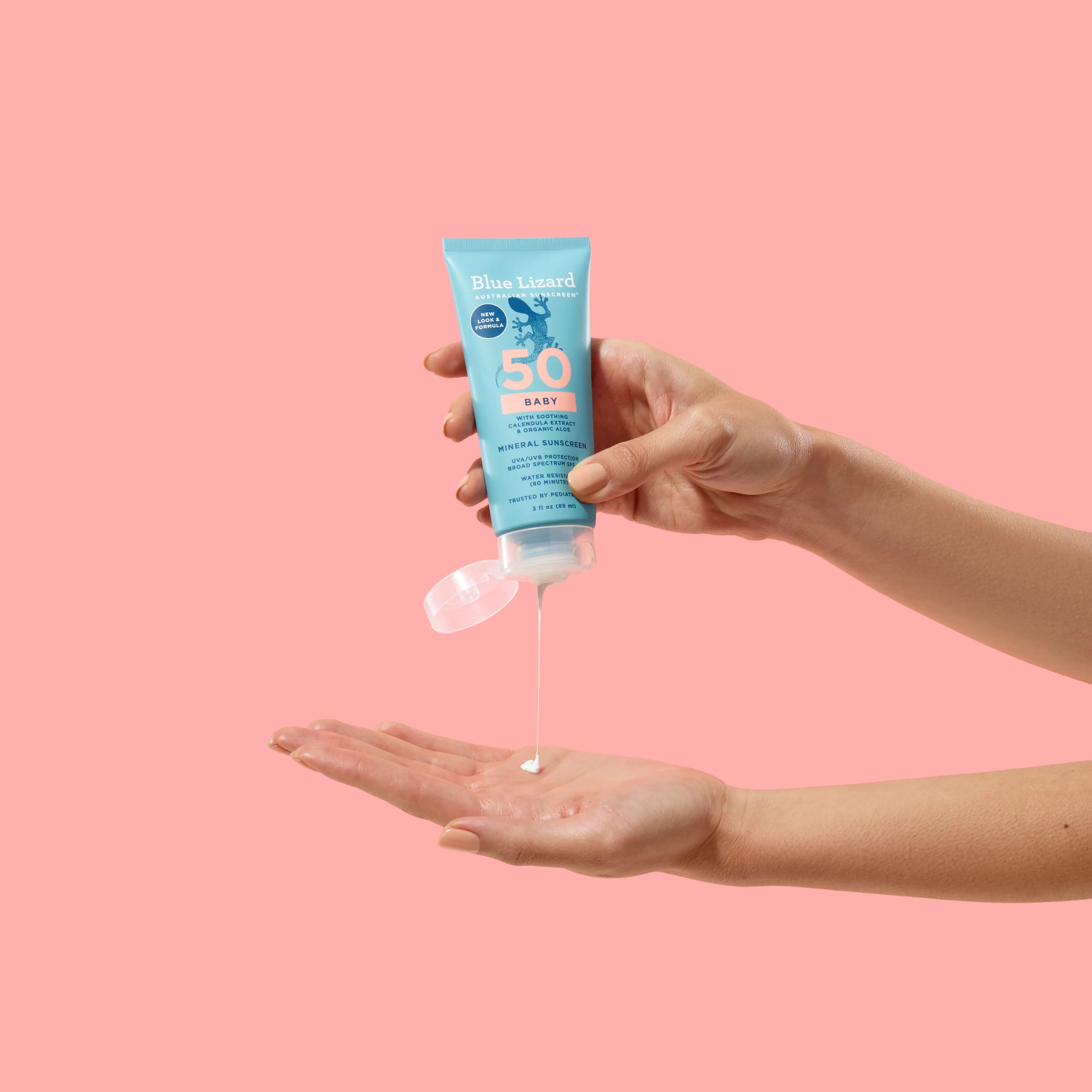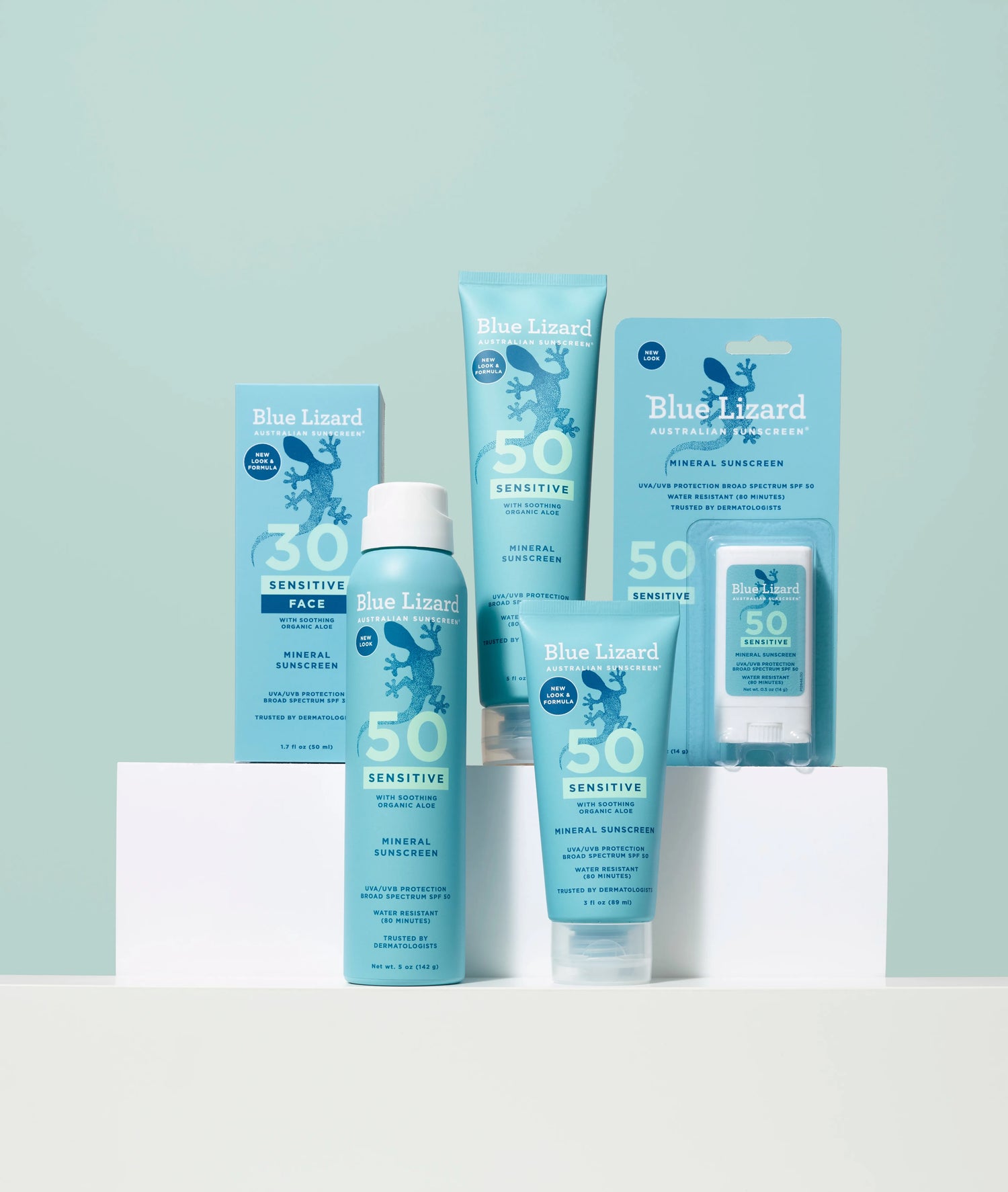The Ultimate Sunscreen Dictionary

SPF, broad spectrum, actives, inactives and UV protection are important, but you may not know what they really are or why they're important.
Understanding your sunscreen is the first step to picking the one that’s right for you. Below is a list of a few important terms found on your sunscreen bottle that you need to know.
SPF

SPF stands for Sun Protection Factor and is a measurement of how effective a sunscreen is at blocking UVB rays (a.k.a. burning rays).
The scale seems simple: the higher the number, the better a sunscreen is at protecting your skin, but the difference between an SPF 30 sunscreen and an SPF 50 sunscreen is 1%.
And no sunscreen blocks 100% of UV rays.
Broad Spectrum Protection (a.k.a. UVA/UVB Protection)
Broad spectrum, like SPF, refers to a sunscreen’s ability to block the sun’s rays. While SPF measures a sunscreen’s ability to protect you from UVB rays alone, “broad spectrum” means that the sunscreen has been tested to protect you from both UVB and UVA rays. Dermatologists stress the importance of broad spectrum protection and its role in preventing skin cancer.
Here are some quick facts on UVA and UVB:
UVA rays, or aging rays, cause fine lines, wrinkles, and are a leading cause of skin cancer. UVA rays make up the majority of UV light that reaches the earth’s surface, and they are able to pass through windows, clouds and water. This means that, during the day, you are almost always exposed to them.
UVB rays, or burning rays, cause sunburns. Like UVA rays, UVB rays are a leading cause of skin cancer.
In the U.S., broad spectrum isn’t really measured—either a sunscreen offers broad spectrum protection or it doesn’t.
For the best broad spectrum protection, look for sunscreens with Zinc Oxide. Zinc Oxide is the only sunscreen ingredient that protects your skin from UVB, short-wave UVA and long-wave UVA rays, making it the most reliable broad spectrum sunscreen ingredient available.
Water Resistance
While sunscreens can be water resistant, no sunscreen is waterproof. Currently, the FDA only allows two claims: 40 minutes and 80 minutes water resistance. No sunscreen can claim that it’s water resistant for longer than 80 minutes.
To claim water resistance, a sunscreen must pass a water test. In this test, a scientist applies sunscreen to a human volunteer and the volunteer engages in water activity for either 40 or 80 minutes. If the sunscreen maintains its SPF rating after 40 minutes in the water, the sunscreen is water resistant for 40 minutes, and likewise for 80 minutes.
Every sunscreen begins to wash off as soon as you get into the water, and it will eventually lose its ability to protect you. To ensure that you stay protected, reapply your sunscreen often according to the directions on the back.
Active Ingredients
There should be two lists of ingredients on your sunscreen bottle: active ingredients and inactive ingredients. These lists have always been on the back of the package, but starting in November of 2019, active ingredients may be required to be listed on the front of packaging as well.
Active ingredients come first, immediately below “Drug Facts.” In short, active ingredients are what makes sunscreens sunscreen. They also determine whether your sunscreen is a mineral sunscreen or a chemical sunscreen.
Sunscreen active ingredients:
Mineral Active Ingredients
Common chemical Active Ingredients
- Avobenzone (a.k.a. Parsol 1789)
- Homosalate
- Octinoxate
- Octocrylene
- Oxybenzone
Inactive Ingredients
Everything else used to make sunscreen falls under inactive ingredients. These ingredients include fillers (for texture and consistency), binders (to to help the ingredients stay together) and stabilizers (to keep ingredients evenly distributed).
Keep in mind that the term “inactive” doesn’t always mean that the ingredient does nothing for your skin. For example, many sunscreens include the natural moisturizer hyaluronic acid to provide an extra boost of hydration, but since it doesn’t aid in sun protection, it’s listed as an inactive ingredient.
So, what are mineral sunscreens and why do dermatologists recommend them?








